Are you dealing with project delays due to unavailability of skilled resources?
Do resource conflicts keep popping up across departments?
Are your top performers constantly facing burnout?
If this sounds familiar, you are likely facing the consequences of ineffective resource management, and these challenges can even derail even the most well-planned projects.
Without clear visibility into resource availability, skillsets, and workload distribution, organizations end up firefighting rather than forward planning. The result? Overloaded top performers facing burnout, underutilized resources draining budgets, and misalignment between demand and capacity, impeding project momentum.
Effective resource management helps overcome these challenges and make informed, strategic decisions. When implemented correctly, it brings clarity to chaos by forecasting demand, aligning skills with project needs, balancing workload, maintaining employee well-being, and maximizing overall productivity.
This blog will provide an in-depth insight into resource management concepts. But first, let’s understand the definition of resource management.
What is Resource Management?
Resource management is the process of planning, forecasting, scheduling, and optimizing the entire resource lifecycle to ensure successful project delivery. These resources encompass personnel, time, financials, equipment & tools, supply inventory, etc.
The main objective of resource management is to fulfill the project requirements and ensure the productive utilization of every resource across the organization. In addition, it helps build a future-ready workforce, improve business profitability, and beat market volatility.
Now, let us have a look at the types of resource management.
Types of Resource Management
Resource management spans various domains, each focusing on a specific category essential for successful project execution and operational efficiency. Given below are a few crucial ones –
Human Resource Management
Human resource management is the strategic approach to effectively manage an organization’s most valuable asset, the workforce, to achieve its goals and objectives. It encompasses recruiting, developing, and retaining the workforce while optimizing the resource health index. This will help ensure seamless project delivery, improve overall billability, and drive organizational growth.
Finance Resource Management
Finance resource management refers to the process of efficient forecasting, planning, and allocation of monetary assets to suitable projects. This includes assessing organizational objectives, prioritizing initiatives, identifying and mitigating financial risks, etc., that help firms meet their business goals within budget. Consequently, this ensures projects are delivered smoothly, while improving the overall ROI.
Equipment Resource Management
Equipment resource management involves effective sourcing, scheduling, utilization, and maintenance of physical assets such as machinery, tools, and other operational equipment essential for business operations. This involves inventory tracking, performance monitoring, compliance with safety and operational standards, etc., to ensure timely availability of tools for seamless project initiation and progress.
Project Resource Management
Project resource management is the process of estimating, planning, allocating, managing, and optimizing resources to execute a project successfully. The goal is to ensure that the right resources are available at the right time and cost to meet project objectives. This enables firms to reduce resourcing costs, drive employee productivity, and ensure successful project delivery.
IT Resource Management
IT resource management is the structured approach to planning, deploying, and maintaining an organization’s technological assets, including hardware, software, data, and IT personnel. It covers the full lifecycle of these resources, from acquisition and integration to monitoring and support. When done right, it ensures uninterrupted digital operations, enhances project success, and boosts business profitability.
Read More: Types of Resource Management Models and How to Choose the Right One?
Having explored the various types of resource management, let us understand the techniques managers use to oversee and optimize these resources effectively.
Resource Management Techniques
Resource management techniques are the strategies and methods employed to allocate and utilize various resources within an organization or project.
Some common techniques include:
Resource Planning
Resource planning is a comprehensive process of proactively planning, forecasting, and allocating resources to the most suitable projects. It also ensures efficient and effective utilization of resources as per their capacity/availability to drive favorable project outcomes within the stipulated time and budget.
Resource Forecasting & Capacity Planning
Resource forecasting enables managers to estimate pipeline project requirements well ahead of the curve. It helps them perform the capacity vs demand gap analysis to identify resource excesses and shortages. Accordingly, they can take suitable resourcing measures to create an optimal talent pool to meet project requirements.
Read More: What is Resource Capacity Planning? An Ultimate Guide for Every Project Manager
Resource Allocation & Scheduling
Resource allocation is the process of identifying and assigning the best-fit personnel based on key resource-centric attributes, such as skills, competencies, location, cost, experience, etc., to the right projects. Following allocation, resource scheduling involves deploying these resources to specific tasks and activities within a project timeline to ensure smooth execution and delivery.
Resource Utilization
Resource utilization is a critical KPI that measures the time employees spend on different project tasks against their availability. It helps track and monitor resource utilization rates and determine if employees are over/under-utilized. Accordingly, managers can take necessary measures to optimize their utilization levels.
Read More: How to Track Resource Utilization?
Resource Optimization
Resource optimization is a holistic approach that involves utilizing resources most efficiently to meet overall business goals. The most common techniques include resource leveling and smoothing, which help minimize over-utilization of resources, improve employee health, and boost organizational top and bottom lines.
Having understood the techniques, let us shift our focus to the resource management plan.
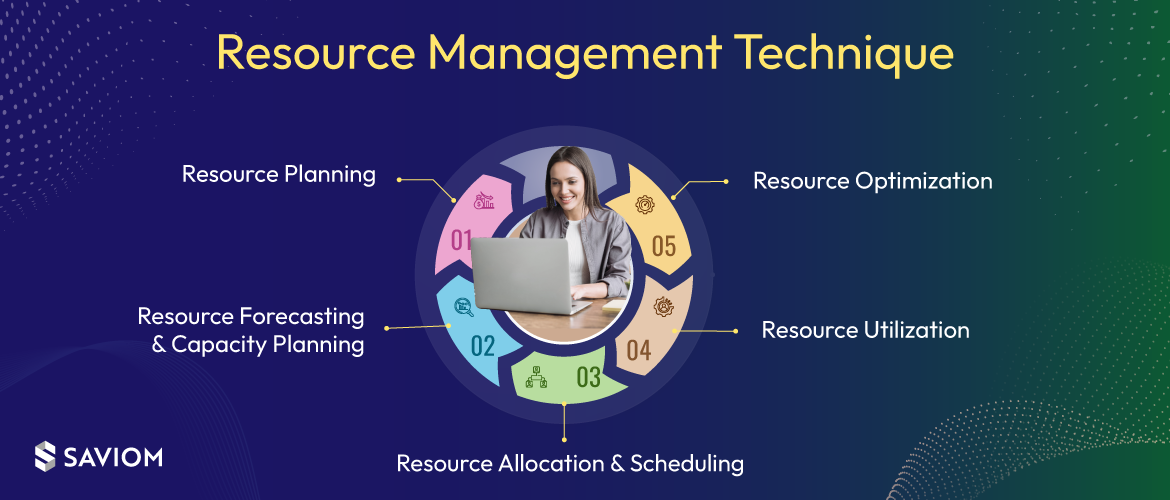
How Do You Create a Resource Management Plan?
A resource management plan is a comprehensive document that outlines the type, quantity, and quality of resources required for each project phase. This helps managers to improve resource estimate accuracy and streamline project workflow.
However, how can you create an efficient resource management plan?
Given below are the steps to create one:
Understand Resource Requirements Thoroughly
The first step to creating an effective resource management plan is to get complete clarity on project goals, scope, timelines, and deliverables. Managers must collaborate with relevant project stakeholders to gather detailed input and identify specific skill requirements. This helps them map the right resources for the right work from the start and reduce skill mismatches, resource shortages, and project delays down the line.
Assess Current Capacity Against Forecasted Demand
Moving on, the second step is to assess your current resource availability and match it against upcoming project demands. This will allow managers to spot potential shortages or excesses early and take correct resourcing actions such as targeted training, upskilling, out-rotation, backfill strategies, etc., to bridge the gap. Thus, it helps maintain an optimized and future-ready talent pool.
Create Resource Schedules
The next step is to build a resource schedule that offers a centralized view of all current and future allocations. It should provide real-time insights into resource work calendars, planned leaves, and preferred work schedules. This will help managers identify if employees are available, overbooked, or underutilized, enabling smarter allocation decisions and seamless operations.
Read More: How to Build a Resource Calendar for Your Project? An Ultimate Guide
Establish Resource Requisition Process
A structured resource requisition process is essential for the timely fulfillment of project needs. Project managers must raise requests with precise details like required skills, role, cost, etc., enabling resource managers to assess internal availability or explore external options ahead of time. This will ensure the right talent is secured early on, preventing resourcing conflicts in the later stage.
Set Strategies to Manage & Optimize Resources
A resource management plan should include strategies to manage and optimize resources based on various parameters like capability, cost, location, utilization, etc. These strategies include training/upskilling existing talent, hiring contingent workers, implementing leveling or smoothing techniques, etc. Thus, proactive measures like this help maintain project momentum while maximizing efficiency and profitability.
Specify & Monitor Performance Metrics
Managers must establish key performance metrics such as utilization rate, billable vs. non-billable hours, cost variance, etc. By leveraging performance tracking tools, they can compare actual outcomes against pre-defined benchmarks to identify deviations early and make timely corrections. This will ensure that resources are planned, allocated, and utilized efficiently, ensuring the project stays on track.
Read More: 7 Critical Project Metrics that You Should Track
Develop Contingency Plans for Resource-Centric Risks
The next step is to prepare for any uncertainties that can impact your resource plan, such as sudden resignations, skill shortages, or unplanned leaves. Managers should establish contingency measures like building buffer capacity or developing alternate staffing strategies. These proactive steps enable firms to reduce resource-related disruptions and ensure smooth project execution even in unexpected scenarios.
Gain Stakeholder Buy-in
Next, it’s essential to involve key stakeholders, such as project sponsors, managers, department heads, etc., in the resource planning process. It is imperative to share the plan transparently, address concerns, and incorporate their feedback. Securing their buy-in ensures team alignment, smoother project execution, and quicker conflict resolution when unexpected bottlenecks arise.
Track and Adjust the Plan
Finally, once your plan is in motion, it’s essential to track progress regularly and make adjustments when needed. Managers must closely monitor KPIs like utilization rate, resource availability rate, billable vs. non-billable hours, etc. This enables them to take proactive actions in case of discrepancies and ensure their resource management plan delivers the intended outcomes.
Read More: What is a Resource Management Plan? 10 Effective Steps to Create One
Now, let’s explore the resource management process through an example.
Resource Management Process: A Real-life Example
Let’s examine the execution of an audit and accounting project and explore how the above concepts are applied in practice.
At the outset, project managers clearly outline the project’s goals, considering factors such as the scope of the audit, regulatory compliance requirements, complexity of financial statements, timelines, client-specific needs, etc. They also specify the duration, the various stages of the project, dependencies, etc.
They then determine the resources needed for each project stage, including skilled personnel (auditors, accountants, tax consultants, financial analysts, etc.), and create a resource schedule.
Given below is a breakdown of the same-
- Planning and Risk Assessment: 1-3 senior auditors, 1-2 tax consultants, 2-3 junior auditors
- Internal Control Testing: 3-5 senior & junior auditors and 2 internal control specialists.
- Testing & Data Analysis: 2-3 junior auditors and 2-3 data analysts.
- Tax Compliance Review: 2-3 tax consultants, 2 accountants, and 1 legal advisor.
- Reporting & Finalization: 2-3 senior auditors, 2 accountants, and 1 editor/proofreader.
Once the project manager estimates the required resources, they send a resource request to the resource manager. Accordingly, he will do capacity planning to evaluate their current workforce repository and identify if the necessary resources are available within the internal talent pool for the scheduled timeline.
They discover a potential shortage of junior auditors during the testing & data analysis stage and plan to onboard two contingent consultants in advance to address this gap.
SAVIOM’s advanced Capacity vs. Demand report helps managers proactively identify resource shortages or excesses on time.
They also assess the need for additional auditors, analysts, accountants, and other skilled professionals to ensure each project stage has the appropriate resources for the specific period. Resource managers then allocate these resources to this audit and accounting project. After that, the project manager selects the team of required resources and schedules them to appropriate tasks.
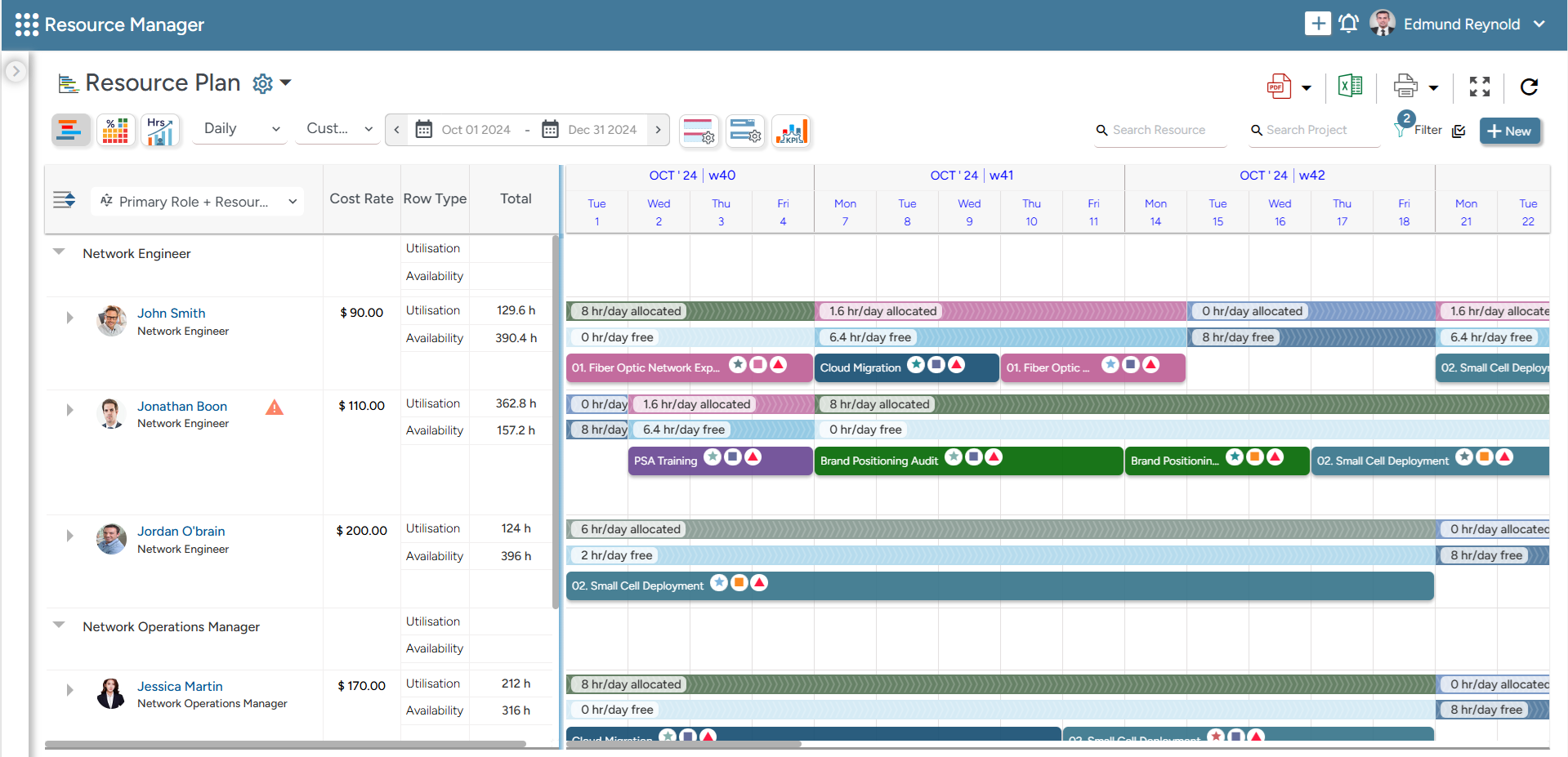
SAVIOM’s robust Multi-dimensional Scheduler enables managers to match the right resources to suitable projects based on department, location, skills, etc.
Given the labor-intensive nature of audit projects, managers must monitor resource utilization levels continuously. This is particularly important for skilled professionals, such as auditors, tax consultants, and analysts, who may become exhausted during resource-intensive stages like compliance reviews and reporting finalization.
SAVIOM’s robust Resource Utilization Reports and Color-coded Heatmaps enable managers to optimize workforce utilization levels with ease.
These real-time insights will help managers implement the right optimization techniques and rectify instances of overutilization to maintain the resource health index and boost employee productivity.
Now that we have explored an example let us see the significance of resource management in organizations.
What is the Importance of Resource Management?
Managing resources efficiently is critical to streamlining operations, optimizing costs, and enhancing project outcomes, making it an essential component for any business aiming for long-term success.
Let’s deep dive to understand the importance of resource management –
Minimizes Project Resource Costs Significantly
According to Deloitte, “Cost reduction takes precedence over other business initiatives.”
An efficient resource management framework provides enterprise-wide visibility, allowing managers to allocate cost-effective global resources for projects. It also helps them create the right mix of local, global, permanent, and contingent resources based on project requirements. Moreover, they can leverage a balanced blend of junior and senior employees for every project to ensure high-quality deliverables and reduce project resourcing costs.
Bridges the Capacity vs. Demand Gap
The resource management process allows managers to foresee pipeline project demand. That way, managers can conduct a capacity vs. demand analysis to identify if there are any resource excesses and shortages. In case of any variances, they can formulate a suitable action plan to bridge the demand gap and avoid last-minute firefighting activities.
Read More: What is Capacity Planning? An Ultimate Guide for Business Efficiency
Enhances Billable Resource Utilization
A proper resource management process helps ensure optimal utilization of all the employees within an organization. It empowers managers to foresee resource utilization in advance, which helps mobilize employees from non-billable to billable and strategic work. Additionally, it provides visibility into resources about to be rolled off from projects, allowing managers to bring forth project timelines or assign them to existing project vacancies. This will help improve the resource health index and overall billability.
Helps Futureproof the Workforce
A robust resource management process empowers firms to anticipate emerging market trends and identify evolving skill demands. Accordingly, managers can determine the areas where the workforce skills are lacking, and design tailored skill development programs to bridge the gap. Thus, by enhancing resource competency, organizations can build a future-ready talent pool, seize upcoming opportunities, and maintain a competitive edge.
Read More: How Can Retraining/Upskilling Future-Proof Your Workforce?
Ensures Successful Project Delivery
Efficient resource management allows managers to facilitate competent resource allocation. This prevents under/over-skilled resources from being assigned to mismatched tasks. Thus, when the right talent is engaged in suitable projects or tasks, they are more productive. This way, the resources can contribute effectively to achieving project goals, meeting deadlines, and ensuring work is completed within the stipulated time and budget.
Moving on, we will discuss the most common challenges that disrupt resource management in organizations.
Common Resource Management Challenges
Despite best efforts, organizations often encounter several roadblocks that hinder effective resource management and impact project outcomes. Some of the most common challenges are:
Lack of Comprehensive Visibility into Enterprise Resources
In large organizations, where resources are spread across departments, teams, projects, locations, etc., managers may lack real-time visibility into their talent pool. As a result, it becomes challenging for organizations to streamline resource management processes and make timely decisions. This can lead to unnecessary cost escalations, sub-par deliverables, and missed project deadlines.
Inability to Align Resource Capacity with Future Demand
In the absence of advanced forecasting tools and techniques, organizations struggle to predict future project requirements accurately. This makes it challenging to match the existing resource capacity with the fluctuating demands. This misalignment creates shortages or excesses of resources, leading to budget overruns, incompetent allocation, and missed deadlines.
Soaring Resourcing Costs Due to Last-minute Firefighting
When managers do not have foresight into future resource requirements, they may fail to assess and identify resource shortages promptly. As a result, to avoid project delays, they are often compelled to secure an expensive resource at the last minute. This ultimately increases overall project resourcing costs and sometimes results in the onboarding of incompetent resources.
Read More: 5 Ways to Reduce Project Management Costs
Incompetent Resource Allocation
Due to a lack of updated skill matrix, managers may not have visibility into key professional attributes such as skills, competencies, experience, etc. This results in skill mismatches, wherein overqualified resources get assigned to mundane tasks, leading to disengagement, while underqualified ones handle critical work, increasing the risk of errors and rework. This ultimately hampers productivity, lowers work quality, and delays project delivery.
Difficulty in Tracking and Optimizing Billable Utilization
Without an advanced tool, firms struggle to accurately track resource utilization levels in real-time. As a result, when discrepancies arise, such as resources spending significant time on BAU activities, managers may be unable to take timely corrective actions to optimize employee’s workloads. This ultimately leads to revenue loss, impairs project profitability, and negatively impacts the organizational bottom line.
Increase in Employee Burnout and Unplanned Attrition
When managers do not have visibility into resource utilization, they may fail to identify or address instances of over- or under-utilization. Overutilized resources often experience stress and burnout, while under-utilized employees may feel undervalued, leading to low morale and disengagement. Both these scenarios contribute to unplanned attrition, disrupting ongoing work, inflating recruitment and training costs, etc.
Read More: 10 Effective Strategies to Combat Unplanned Attrition in the IT Industry
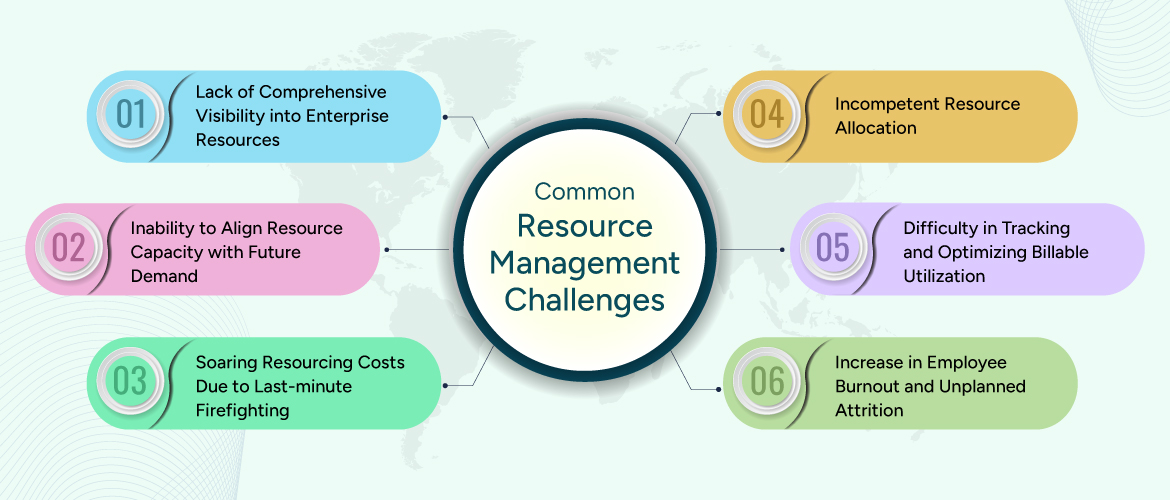
Now, let us understand some basic resource management best practices that every manager must know to tackle the challenges effectively.
9 Resource Management Best Practices
We know that effective management of resources is the cornerstone of every business, and it helps optimize workforce productivity, enhance project delivery, and maximize profitability.
Here is how adopting modern ERM software can prove instrumental in this process –
Gain a Centralized View of the Workforce Across the Firm
Advanced resource management software helps consolidate all resource-related information, like skill sets, experience, capacity, availability, demand, cost rate, location, etc., on a centralized repository. It creates a single version of truth for the entire organization and eliminates information silos, resulting in better decision-making.
This centralized visibility allows resource managers to visualize which resources are currently working on what projects. Moreover, it enables them to identify and allocate the best-fit resources to project tasks with matching competencies to ensure competent allocation.
Anticipate Resource Gaps & Address them Effectively
Organizations must have a competent talent pool to ensure successful project execution. With the help of the tool’s advanced forecasting capabilities, managers can predict the resource requirements for pipeline projects. They can perform a capacity vs. demand analysis to identify the shortages or excess resources and implement necessary corrective measures to bridge the gap.
For instance, in case of skill shortages, firms can hire contingent or permanent staff, retrain existing resources, or implement out-rotation and backfill strategy. Conversely, when there is an excess, managers can bring forward the project timelines, initiate training/upskilling, or sell the extra resources at discounted rates to avoid capacity wastage.
Read More: How Does Capacity Forecasting Help Build a Future-Ready Workforce?
Allocate the Right Personnel to the Right Project
Allocating the right resources to the right project at the right time and cost is crucial to ensure successful delivery. With the ERM tool’s 360-degree visibility of the talent pool, resource managers can assess the competencies and assign the best-fit personnel instead of the “first-visible-first-fit” ones to every opportunity.
Moreover, they can strategically distribute niche-skilled resources across all projects rather than assigning them to a single high-priority initiative. Additionally, managers can assign a cost-effective, competent resource to the project instead of a high-cost professional, thereby reducing resourcing costs and enhancing operational efficiency.
Track and Maximize Billable Utilization of Employees
The overall profitability of an organization depends on the optimal utilization of resources. Modern resource management tool offers embedded color-coded resource heatmaps and real-time utilization reports that provide timely insights into the workforce’s utilization levels. This helps managers identify the instances of over/under-utilization and implement corrective treatments to optimize the workforce.
Additionally, they can ensure that employees spend less time on non-billable, low-priority tasks and mobilize them to billable/strategic work, thereby enhancing billability. They can also implement training and development programs to promote multiskilling, allowing them to be deployed to a wider range of billable projects and maximize profitability.
Read More: 5 Effective Ways to Maximize Billable Resource Utilization in Professional Services Firms
Create a Judicious Mix of Local and Global Workforce
Due to globalization and increased competition, many multinational corporations are expanding their operations across geographies to meet growing client demand, reduce costs, and boost profitability. With efficient resource management, organizations can create and maintain a balanced workforce of local and global resources.
Further, they can implement a multi-location policy that allows managers to leverage cost-effective global professionals when local resources for a specific skill set are unavailable. Moreover, they can use contingent workers for short-term project requirements instead of hiring permanent resources. This helps minimize resourcing costs and ensure seamless operational workflow.
Use Resource Optimization Techniques as Needed
With effective resource management, organizations can ensure optimal workforce utilization throughout a project lifecycle. By implementing suitable resource optimization techniques such as leveling and smoothing, organizations can ensure competent resource allocation, improved employee productivity, better ROI, etc.
For instance, with projects having adjustable timelines, managers can apply resource leveling to adjust the start and end dates based on employee availability. On the other hand, they can use a resource-smoothing technique for time-sensitive projects, maintaining project quality and overall organizational goals.
Read More: How Resource Optimization Boosts Task Management?
Leverage Real-time BI Data for Accurate Resource Insights
The software’s real-time business intelligence feature helps organizations analyze large volumes of business data and make informed decisions. They can get accurate insights into various project resource metrics such as skills, availability, capacity, demand, cost, etc.
Managers can utilize this information to identify and mitigate potential resource risks before they derail project progress. For instance, a forecast vs. actual cost report helps review if the project is progressing as per the estimated budget. If there is a variance, managers can implement cost optimization measures to control budget overruns.
Offer Skill Development Programs to Employees
In today’s competitive business environment, providing suitable skill development initiatives such as on-the-job training, reskilling/upskilling, workshops, etc., is key to staying abreast of emerging technology and industry trends. It equips employees with the skills to handle new challenges, bridge current skill gaps, and prepare them for future opportunities.
Additionally, it empowers long-term employees within firms to explore other roles within the organization, minimizing the need for external hiring or incurring additional costs. Thus, investing in staff development boosts workforce morale, improves employee performance, and drives organizational growth.
Read More: Signs of Low Employee Morale and How to Course Correct
Review & Adjust the Resource Management Plan
During project progression, factors like scope creep, unplanned leaves, supply chain disruptions, etc., can impact resource requirements. By conducting periodic reviews, managers can identify potential risks and adjust the resource management plan accordingly.
This ensures sustained workforce productivity, timely delivery, and seamless project outcomes. Thus, a well-maintained and regularly updated resource management framework reduces disruptions, supports consistent project performance, and enhances overall operational efficiency.
In the next section, we will explore the benefits of implementing resource management software in a firm.
How Can Modern Resource Management Help?
Managing resources well is vital to efficient planning, streamlined allocation, and optimizing workforce productivity. That’s why organizations should choose 5th gen resource management software to improve project outcomes and maximize ROI. Here’s how it helps:
- All-in-One Resource Planner: The tool’s all-in-one resource planner offers 360-degree visibility into all crucial information and helps make fast and intelligent resourcing decisions. It comes with some smart functionalities like:
- Multi-dimensional Analysis that allows managers to slice and dice resource data by role, location, skill, cost, and more. This enables smarter staffing decisions by aligning the right talent to the right task.
- Embedded capacity planning feature, which helps assess resource shortages or excesses. With this insight, managers can take corrective actions well in advance to bridge demand gaps and ensure timely project initiation.
- The embedded heat mapping enables managers to gain real-time insight into workload distribution across teams and easily identify & mitigate over or under-utilization to maintain resource health index.
- The intelligent matchmaking feature enables managers to identify the best-fit candidates for tasks by assessing multiple parameters like skill, availability, competencies, cost, etc., thereby facilitating competent resource allocation.
- The early warning system automatically flags overloading, scheduling conflicts, double-bookings, booking during time off, etc. This gives managers ample lead time to take corrective measures to minimize variances.
- Lastly, the tool’s KPI forecaster offers foresight into key resource KPIs such as availability, capacity, utilization, bench time, skill shortage, etc. This enables proactive decision-making and keeps project performance on track.
2. Resource Forecasting: The tool comes with a robust forecasting feature that gives managers complete foresight into resource needs for pipeline projects. It also provides insight into forecast vs. actual cost analysis that helps control project budgets and improve future financial planning for projects.
3. Resource Optimization: The tool allows managers to conduct what-if analysis to simulate and compare different scenarios based on changing project needs. This helps firms arrive at the most profitable resource plan, thereby preventing unnecessary bottlenecks and ensuring timely project initiation & delivery.
4. Talent Planning: The tool’s inbuilt competency matrix captures the available skills, certifications, experience, etc., across the firm. This helps identify talent gaps, plan targeted upskilling, and ensure the right people are available for future project needs without relying heavily on external hiring.
5. Task and Time Management: The tool’s task management feature helps assign the most cost-effective and qualified resources to tasks & projects. In addition, its built-in timesheet tracking facility offers timesheets and automated approval workflows to help gauge billable and non-billable hours of the resources.
6. Real-time BI Reports & Dashboards: The tool offers real-time dashboards and analytics that help track resource performance, capacity, utilization, availability, etc. Also, these reports and dashboards are highly customizable, allowing stakeholders to view only necessary data and enabling quick decision-making.
7. Workflow Automation & Tool Integration: Finally, the platform allows managers to automate workflows like resource requisition, skill management, etc. It also offers both automatic and manual integration with various systems to create a single source of truth.
Read More: Resource Management Buyer’s Guide
Conclusion
It is now evident that a well-defined resource management plan is crucial for the success of any business. It is not a ‘one size fits all’ process. Every organization operates differently and, therefore, needs a tailored project resource plan that suits its needs.
Therefore, it is imperative to use the right system and processes to manage the most expensive investment of your organization, your workforce!
What process do you follow to ensure efficient management of resources?
The Glossary
Read More: Glossary of Resource Workforce Planning, Scheduling and Management

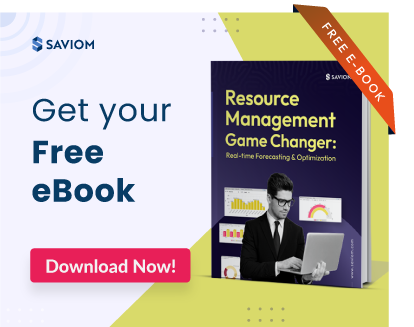


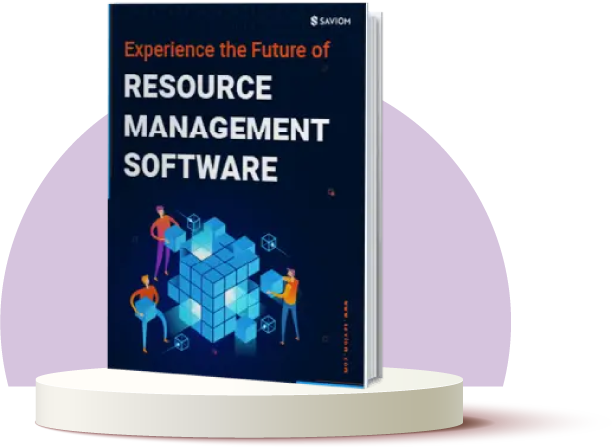

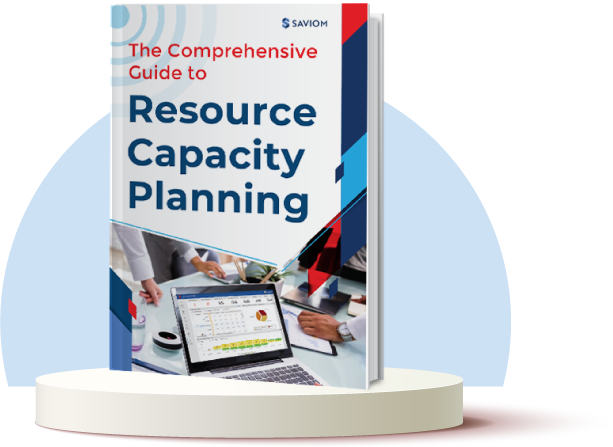






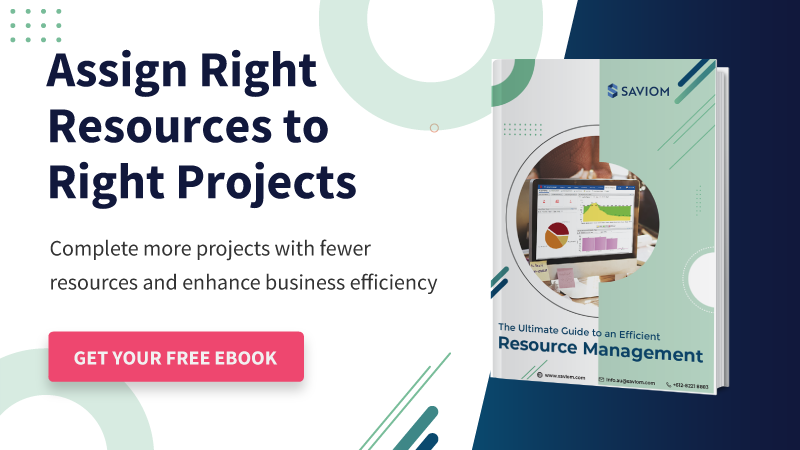
Leave a Reply